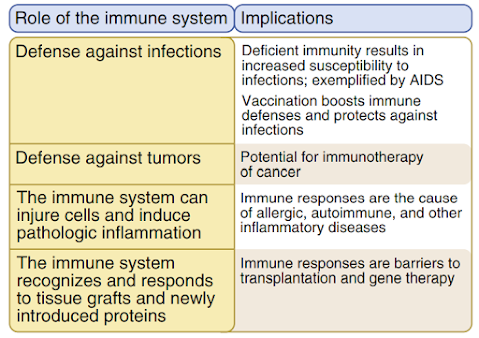Do you ever stop breathing while asleep?? what is sleep apnea??!!!
Definition
Obstructive sleep apnea/hypopnea syndrome (OSAHS) and central sleep apnea (CSA) are both classified as sleep-related breathing disorders
Prevalence of the number of people who suffer from this disease
The prevalence of OSAHS is two- to fourfold higher among men than among women. Factors that predispose men to OSAHS include android patterns of obesity (resulting in upper-airway fat deposition) and relatively great pharyngeal length, which exacerbates collapsibility (which means the lungs are not filled with air and shrink ie. collapse).
Premenopausal women are relatively protected from OSAHS by the influence of
sex hormones on the ventilatory drive(which means the brain sending signals to the respiratory muscles to put any effort into breathing so that we can breathe).
Types Of Sleep Apnea-
There are basically three types of sleep apnea
● Obstructive sleep apnea, the more common form that occurs when throat muscles
relax and the air cannot pass to the lungs and the breathing process cannot be completed.
● Central sleep apnea, which occurs when your brain doesn't send proper signals to
the muscles that control breathing as said above the so-called VENTILATORY DRIVE!!!!.
● Complex sleep apnea syndrome, also known as treatment-emergent central
sleep apnea, occurs when someone has both obstructive sleep apnea and
central sleep apnea. MEANING HAVING THEM BOTH AT ONCE IS PRETTY TERRIFYING.
Mechanism of OSA(obstructive sleep apnea)
This leads to intermittent disturbances in gas
exchange (eg. hypercapnia(high co2 in the body) and hypoxemia(low o2 in the body) and
fragmented sleep.
Risk factors that can cause sleep apnea
1) Advancing age
2) Male gender
3) Obesity
4) Narrowed airway
5) High blood pressure (hypertension)
6) Craniofacial or upper airway soft tissue abnormalities
7) Diabetes
8) A family history of sleep apnea.
Additional risk factors include
1) Smoking, nasal congestion, menopause, family history
2) Also with certain medical conditions such as pregnancy, end-stage renal
disease, congestive heart failure, chronic lung disease, stroke.
Symptoms
Signs and symptoms include
1) daytime sleepiness
2) nonrestorative sleep
3) loud snoring
4)witnessed apneas by the bed partner
5) nocturnal restlessness
6) insomnia with frequent awakenings
7) lack of concentration
8) cognitive deficits
9) changes in mood
10) morning headaches
11) vivid, strange, or threatening dreams
12) gastroesophageal reflux
13) nocturia the meed to urinate we have in the night which creeps the hell out for so many reasons😅😅😅
Examination findings
● Narrow or crowded airway
● Obesity
● Large neck circumference
● Systemic hypertension
● Hypercapnia- high level of co2 in the body
● Cor pulmonale- is a condition that causes the right side of the heart to fail.
● Polycythemia- an abnormally increased concentration of hemoglobin in the blood, either through reduction of plasma volume or increase in red cell numbers. It may be a primary disease of unknown cause or a secondary condition linked to respiratory or circulatory disorder or cancer.
● Cardiovascular disease
● Cerebrovascular disease- the disease of the blood vessels of the brain
● Cardiac dysrhythmias-Problem with the rate or rhythm of your heartbeat caused by changes in your heart's normal sequence of electrical impulses.
Complications
● Daytime fatigue because you cannot sleep during nighttime and thus your whole daytime gets disturbed
● High blood pressure or heart problems. This can be caused by various reasons firstly because you are frustrated about your sleeping pattern and secondly ur heartbeat is rapid and caused more than normal blood to flow through the arteries and thus the high blood pressure
● Obstructive sleep apnea might also increase your risk of recurrent heart
attack,
● Type 2 diabetes...
● Metabolic syndrome.
● Complications with medications and surgery.
● Liver problems.
● Sleep-deprived partners and might be sleep deprived too 😓😓😓
An evaluation often involves overnight monitoring at a sleep center
of your breathing and other body functions during sleep. Home
sleep testing also might be an option. Tests to detect sleep apnea
include:
● Nocturnal polysomnography. During this test, you're
hooked up to equipment that monitors your heart, lung, and brain activity. and you are supposed to sleep in that position😐😐
● Home sleep tests. Your doctor might provide you with
simplified tests to be used at home to diagnose sleep
apnea...
Treatment
For milder cases of sleep apnea, your doctor may recommend only lifestyle changes, such
as losing weight or quitting smoking. If you have nasal allergies, your doctor will recommend
treatment for your allergies.
If these measures don't improve your signs and symptoms or if your apnea is moderate to
severe, several other treatments are available.
Certain devices can help open up a blocked airway. In other cases, surgery might be
necessary.
Therapies of treatment
● Continuous Positive airway pressure
● Other airway pressure devices.
● Oral appliances
● Treatment for associated medical problems.
● Supplemental oxygen
● Adaptive servo-ventilation (ASV)
Surgery
● Tissue removal.
● Tissue shrinkage.
● Jaw repositioning
Other types of surgery may help reduce snoring and contribute to the treatment of sleep apnea by clearing
or enlarging air passages.
conclusion
Sleep apnea is a very serious problem that is not very uncommon and there are chances when the person who is suffering from the disease doesn't even know. So, it is necessary to go to a doctor when you have any kind of symptoms that I have listed above and get it checked out. it might be possible that these symptoms may be something else but let us be
safe than sorry, okay.
safe than sorry, okay.
So stay healthy safe and informed
thankyou😃😃






Comments
Post a Comment